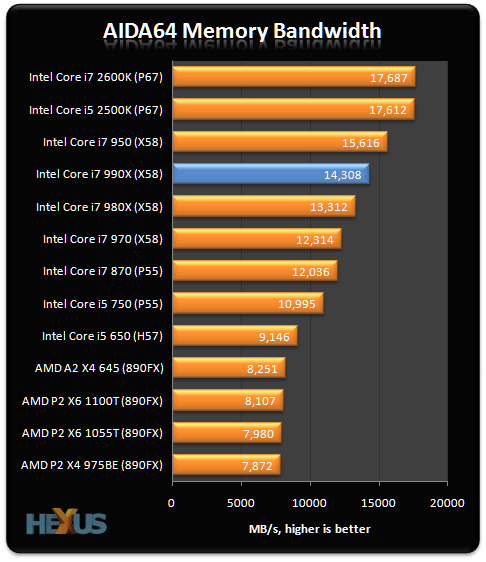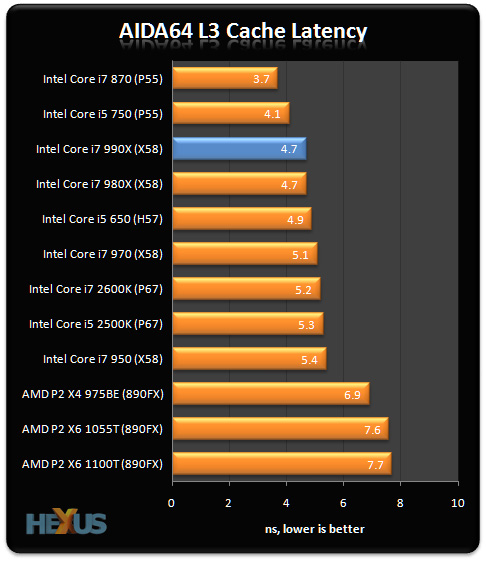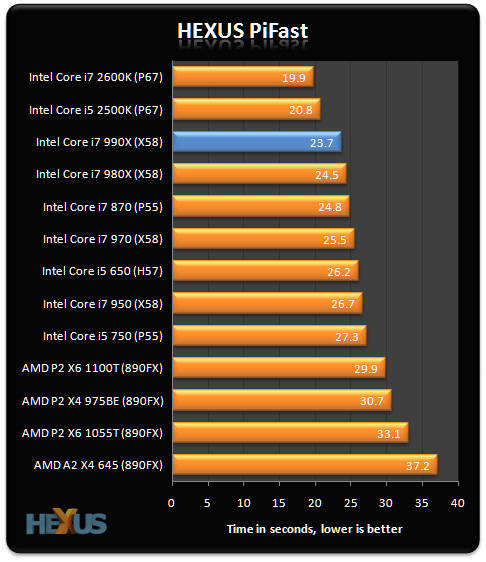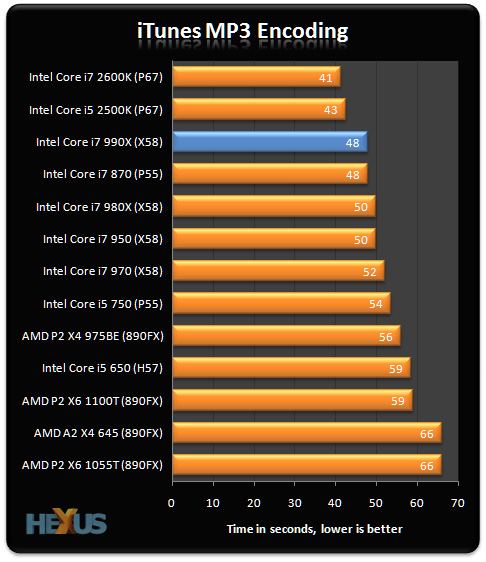Benchmarks: Bandwidth, Latency, and Light-load Tests

X58's triple-channel memory controller provides ample bandwidth for the 990X, but it's not quite up to the standards set by the hugely-efficient and highly-clocked Sandy Bridge processors; Core i7 2600K and Core i5 2500K.

The 12MB of L3 cache available to the Core i7 990X is going to come in handy, though, and it's suitably nippy, too.

Moving onto our first test of the CPU's out-and-out speed, the number-crunching PiFast benchmark relies heavily on maximum CPU speed and puts Intel's £780 range-topper in third place.
Surprised to see the 990X beaten by Sandy Bridge parts that cost up to 80 per cent less? You shouldn't be, the hexa-core chip's maximum turbo frequency of 3.73GHz scores impressive results, but the quad-core 2600K can scale up to 3.8GHz and features new-and-improved Turbo Boost 2.0 technology.

Apple iTunes isn't the best at utilising multiple cores but it paints a real-world picture of processor speed. Like PiFast, it benefits from high frequencies and favours the Sandy Bridge processors.
The Core i7 990X is the pick of Intel's last-generation parts, but as you're about to see it needs all of its six cores to be well stressed in order to shine.









